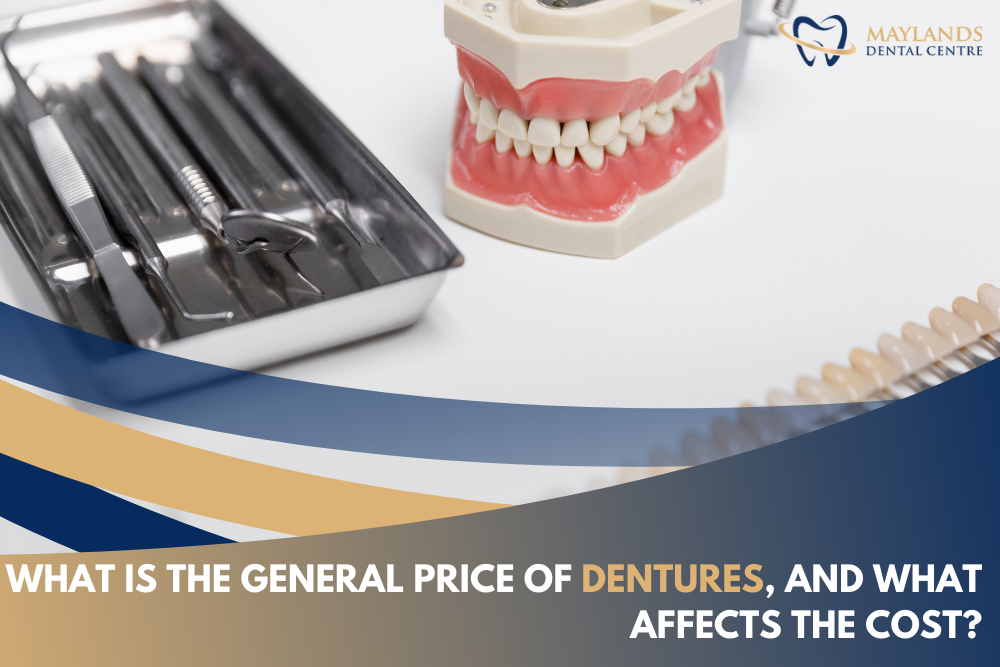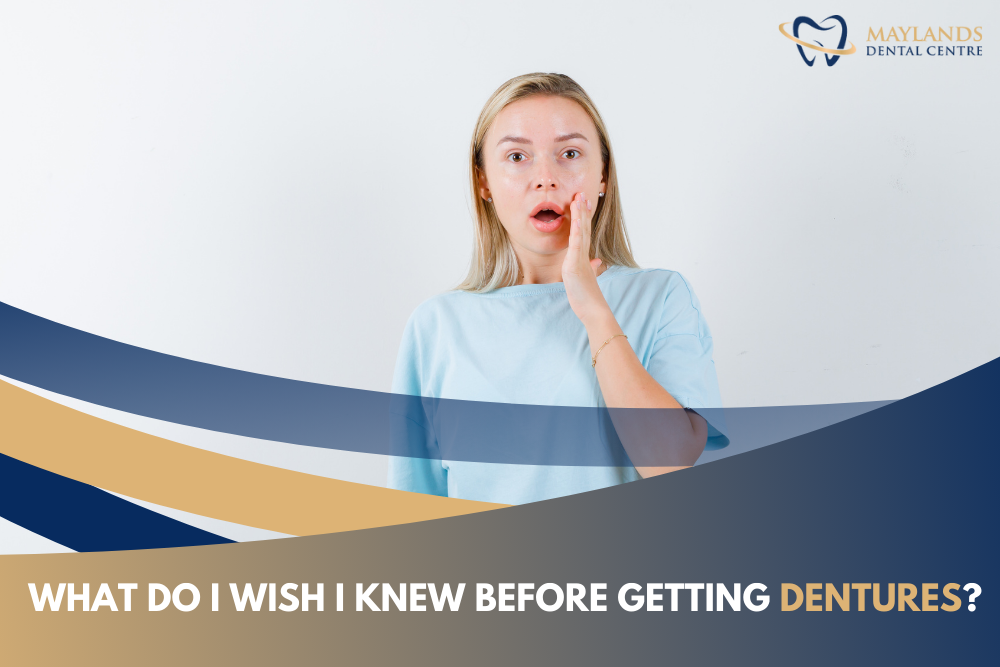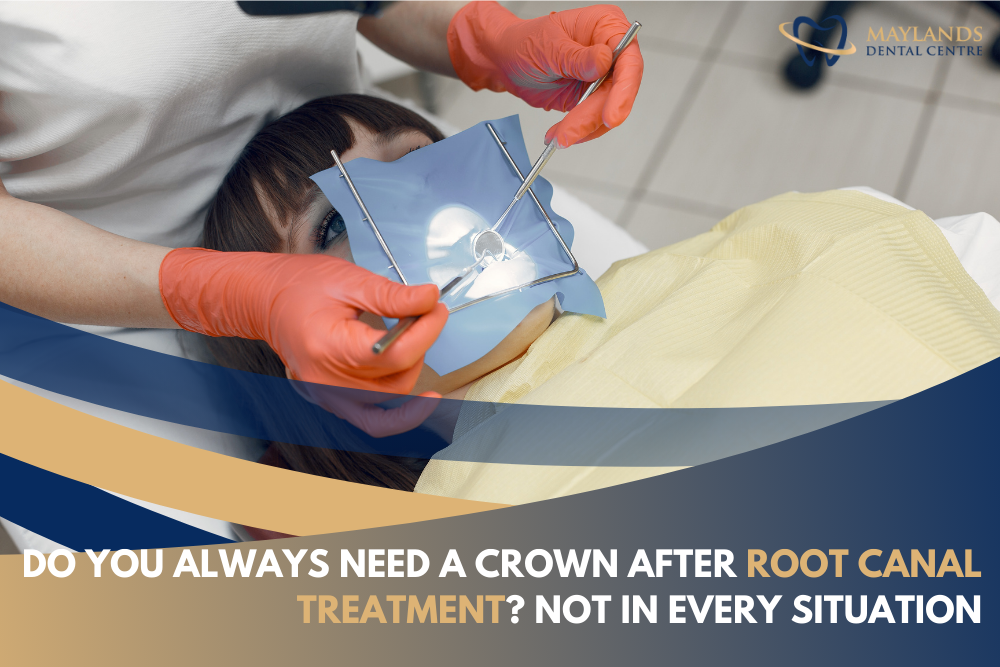Many people feel uncertain or self-conscious about their crooked teeth. It’s normal to wonder what this means for your health and appearance. There’s no single standard for how teeth should look. What’s considered attractive or normal often changes between cultures and individuals.
This article explores the question many ask: “Is it okay to have crooked teeth?” We’ll look at the causes, health implications, and treatment options in clear, simple terms. We aim to offer factual, unbiased information supported by dental research. You’ll also learn when treatment might be necessary and when it’s purely a personal choice.
Feeling informed helps people make decisions with which they’re comfortable. Our goal is to explain the facts without judgement or pressure. We also want to show how dental professionals assess and manage misaligned teeth. Let’s start by understanding what dental misalignment actually means.
Blog Navigation
- Summary of the Content:
- Understanding Dental Misalignment
- Health Implications of Crooked Teeth
- Knocked-Out (Avulsed) Tooth
- Chipped, Cracked, or Fractured Teeth
- Lost Filling or Crown
- Soft Tissue Injuries
- Object Caught Between Teeth
- Abscess or Dental Infection
- Emergency Dental Kit: What to Have on Hand
- How to Prevent Dental Emergencies
- Emergency Dental Care: What to Expect When Visiting an Emergency Dentist
- Final Thoughts
Summary of the Content:
- Crooked teeth can vary in appearance and may affect function. Some people manage well without seeking orthodontic treatment.
- There are different types of misalignment, including crowding, gaps, overbites, and crossbites. Each presents unique challenges and potential health impacts.
- Causes of misalignment include genetics, childhood habits, dental trauma, and early baby tooth loss. Many of these are beyond your control.
- Cultural views on dental appearance differ. Some societies value gaps or modified teeth as signs of beauty or status.
- Misaligned teeth may affect cleaning, leading to plaque buildup. They can also contribute to tooth wear, as well as speech and chewing difficulties.
- Severe misalignment may impact functions, such as digestion or breathing, although stronger scientific evidence is required to confirm this connection.
- Dental appearance can affect confidence and social perception. Social media may increase self-consciousness among teens and young adults.
- Dentists may recommend treatment when misalignment causes discomfort or hygiene issues.
Understanding Dental Misalignment

Dental misalignment refers to teeth that are not positioned properly within the dental arch. Causes and experiences of misalignment vary, with many cases being beyond personal control. While some people seek treatment, others manage their condition without intervention.
Types of Misalignment
Dental misalignment can appear in various forms, each with its distinct appearance and potential impact on oral function. Below are the most common types of dental misalignment:
- Crowding:
Teeth may crowd when there isn’t enough space in the jaw, especially after wisdom teeth emerge and shift alignment. This is one of the most common forms of misalignment and often makes cleaning between teeth more difficult. - Spacing:
Gaps or spaces between teeth can occur when teeth are smaller than the jaw or if some teeth are missing. These spaces can sometimes trap food and may affect the appearance of your smile. - Rotated Teeth:
A rotated tooth turns or twists out of its normal position. This often happens due to a lack of space and may be noticeable when smiling or speaking. - Overbite:
The upper front teeth overlap the lower front teeth significantly. A small overbite is common and usually harmless. A deeper overbite may cause lower tooth wear or jaw discomfort. - Underbite:
The lower front teeth extend beyond the upper front teeth. This type of misalignment can make chewing more difficult and may place additional stress on the jaw joints. - Crossbite:
Some upper teeth sit inside the lower teeth when biting down. Crossbites can involve the front or back teeth and may lead to uneven wear or jaw discomfort if not managed. - Openbite:
The upper and lower teeth don’t touch when the mouth is closed, often leaving a visible gap. Openbites may develop from habits like thumb sucking and can affect speech or cause difficulty when biting into food. - Midline Shift:
The centre of the upper and lower teeth do not align, often visible when smiling. This may be a sign of uneven jaw development or missing teeth and can affect the symmetry of your bite.
Some types of dental misalignment are common and mild. Others may require a professional assessment to determine the most appropriate course of treatment. Your dentist can help identify the type of misalignment and guide you through appropriate options if needed.
Causes of Crooked Teeth
While crooked teeth are common, their causes are often complex and influenced by factors outside of personal control. Recognising these underlying causes can help reduce any sense of blame and support informed decisions about oral health.
- Genetics play a major role in dental alignment. Inherited traits, such as jaw size, tooth shape, or tendencies towards overcrowding, can significantly influence how teeth develop and align.
- Childhood habits can affect how teeth grow. Extended thumb sucking or pacifier use beyond the age of three can place pressure on developing teeth and jaws. This pressure may contribute to misalignment as the mouth develops.
- Early loss of baby teeth can disrupt the natural spacing for adult teeth. When baby teeth fall out early from decay or trauma, nearby teeth may begin shifting into the space. This movement can reduce the room available for adult teeth, making proper eruption and alignment more difficult.
- Dental injuries during childhood can alter tooth positioning. Accidents that chip, loosen, or displace teeth may interfere with natural eruption patterns and result in misaligned teeth over time.
While some causes can be addressed early, many occur naturally and are beyond personal control. A dental professional can assess these factors and provide guidance tailored to your needs.
Cultural and Historical Perspectives on Dental Alignment
Different cultures and periods have viewed dental alignment in diverse ways, reflecting their aesthetic values. These variations show that beauty standards are not universal but shaped by cultural traditions and social influences.
- Among some Mayan civilisations, dental modification was a sign of status. People deliberately altered their tooth alignment by filing them into shapes or embedding jade as a form of expression. This practice reflected spiritual beliefs and conveyed social status within certain Mesoamerican cultures.
- In contemporary Western cultures, straight teeth are often linked to ideals of health, success, and professionalism. However, these beliefs are largely shaped by media and marketing rather than by an actual medical need.
- In certain African tribes, the spacing between front teeth is still considered a mark of beauty and fertility. This feature is not only accepted but celebrated within specific cultural contexts.
These examples show that what one society may see as a flaw, another may view as desirable or even aspirational. Understanding these cultural differences highlights that dental aesthetics are subjective and shaped by diverse traditions and social values. People should base their orthodontic decisions on their personal health needs and goals rather than on cosmetic trends.
Health Implications of Crooked Teeth
Crooked teeth can disrupt natural oral function and may increase your risk of developing dental or jaw-related concerns. Being aware of these risks helps you take proactive steps towards protecting your oral health.
When Misalignment Affects Oral Health
Misaligned teeth can affect more than just your appearance — they can also impact your oral health in specific, evidence-based ways. Here’s how certain types of dental misalignment can contribute to potential issues:
- Crowded teeth can make it more difficult to clean all surfaces, allowing plaque to accumulate in hard-to-reach areas. This buildup may increase the risk of tooth decay and gum disease if not addressed with proper care and hygiene.
- Tight or overlapping teeth can create difficult-to-clean spaces where food and bacteria accumulate. This may contribute to the formation of tartar or bad breath.
- Severe overbites or underbites can cause uneven pressure on teeth, leading to gradual enamel wear over time. This enamel loss may contribute to tooth sensitivity, especially when exposed to hot, cold, or sweet foods and drinks.
- Open bites or crossbites can reduce the effectiveness of chewing, potentially leading to difficulties with eating or food breakdown. These bite issues may also influence speech clarity in some individuals, depending on the severity and positioning of the teeth.
Not all misalignment leads to oral health problems, and many people live comfortably without needing dental intervention. However, a dental professional can assess whether a specific alignment issue poses a health concern.
Impact on Overall Health
Significant dental misalignment can impact chewing efficiency, making it harder to break down food for proper digestion. Improperly chewed food may lead to digestive discomfort or nutritional issues in some individuals. Research confirms that malocclusion can contribute to speech difficulties, especially with certain sounds or syllables. These effects often depend on the severity and specific type of misalignment present.
Emerging studies suggest a potential link between misaligned teeth and airway obstruction during sleep, such as in sleep-disordered breathing. However, more robust evidence is needed before confirming consistent causation in diverse patient populations. Dental professionals may assess airway risks when misalignment appears linked to breathing patterns. Consultation with a multidisciplinary team is often recommended in these complex health presentations.
Psychological and Social Considerations
Dental appearance is just one aspect of self-image, but it can significantly impact how people perceive themselves. It may also influence how individuals interact socially or perceive others’ reactions in professional settings. Below are key considerations that reflect the psychological and social aspects of having crooked teeth:
- Self-Image and Dental Aesthetics:
Research shows that people worried about crooked teeth may feel less confident during adolescence and early adulthood. This age group often faces social pressures related to appearance, which can influence how they perceive their dental aesthetics. - Social Interactions and Perception:
Studies have shown that visible dental misalignment may influence how others perceive traits such as hygiene, confidence, or professionalism. These perceptions can significantly impact first impressions in social settings or professional situations like job interviews. - Mental Well-being and Peer Influence:
Increased exposure to idealised smiles on social and mainstream media can heighten self-consciousness about dental appearance. Teenagers and young adults may feel more pressure to fit in socially when comparing their smiles to curated online images.
It’s natural for some individuals to feel self-conscious about crooked teeth, especially in appearance-focused environments or social settings. Confidence and well-being often come from many sources beyond physical appearance, including relationships, achievements, and personal values. Open conversations with a dental professional can help clarify whether concerns are emotional, functional, or a combination of both.
Knocked-Out (Avulsed) Tooth
A knocked-out tooth is a true dental emergency. To increase the likelihood of preserving the tooth’s viability, a dentist should be seen within 30 minutes.
Follow these steps:
- Carefully locate the tooth and hold it only by the crown (the visible part), avoiding contact with the root.
- If the tooth is dirty, gently rinse it with milk or saline solution. Do not scrub the tooth, especially the root area. Air dry.
- If possible, place the tooth back into the socket and bite on a clean gauze to hold it in place.
- If reimplantation is not possible, place the tooth in a container with milk, saline, or the person’s saliva to keep it moist.
- Proceed to your dental clinic or the emergency room without delay for evaluation and further care.
- Do not attempt to force the tooth back into place if there’s resistance, visible debris in the socket, or signs of trauma.
Time is critical. A doctor or dentist can assess if reimplantation is possible and develop an appropriate treatment plan. The sooner the tooth is re-inserted and stabilised, the greater the chance it may remain functional.
Chipped, Cracked, or Fractured Teeth
Dental fractures can be classified into the following:
- Craze Lines:
Superficial cracks affecting only the enamel; typically asymptomatic and not requiring treatment. - Fractured Cusp:
A complete or incomplete fracture of a cusp, often associated with restorations; may necessitate cusp removal and restoration. - Cracked Tooth:
An incomplete fracture extending from the crown towards the root; symptoms vary, and treatment depends on the extent of the crack. - Split Tooth:
A complete fracture from the crown to the root, resulting in separable segments; often requires extraction. - Vertical Root Fracture (VRF):
Fractures originating in the root, frequently seen in teeth with a history of root canal treatment; diagnosis is challenging, and treatment options are limited.
- Craze Lines:
Not all broken teeth are the same. A small chip may be cosmetic, while a cracked tooth may expose the nerve or affect the tooth’s structure.
Here’s how to respond:
- If there is pain or the inner tooth is exposed, avoid chewing on that side and rinse your mouth gently with warm water.
- Carefully collect any broken pieces and store them in a clean container for your dental visit.
- Apply a cold compress to the outside of your cheek to help reduce swelling and discomfort.
See your dental team if the fracture is deep, causes pain, or affects function. Minor cracks can be monitored until a dental procedure is scheduled.
Serious damage may require immediate attention, especially if sensitive to temperature or pressure. Your dentist will evaluate the damage and explain appropriate treatment options.
Lost Filling or Crown
Losing a filling or crown can leave the tooth exposed and sensitive. This can cause discomfort when eating or drinking.
If this occurs:
- Rinse your mouth gently with warm water to help keep the area clean.
- Avoid sticky, chewy, or hard foods that may put pressure on the exposed area.
- If you have recovered the crown, place it in a clean container and bring it with you to your dentist appointment.
- While waiting for your appointment, chew on the opposite side of your mouth and keep the area clean after meals to reduce the risk of irritation or food buildup.
Do not use household adhesives or glue to reattach the restoration. These can be harmful and may complicate the dental procedure.
Delayed care could lead to further exposure, pain, or possible infection. Arrange an appointment with your dentist within a few days to assess the tooth and plan for appropriate care.
Soft Tissue Injuries
Injuries to the tongue, lips, cheeks, or gum tissue can result from accidents, falls, or eating hard objects. While many soft tissue injuries are minor, some require emergency dental care.
Steps to follow:
- Rinse your mouth gently with warm salt water to help remove debris and reduce bacteria.
- Apply gentle pressure using clean gauze or a cloth to help control bleeding.
- Place a cold compress on the outside of your cheek to manage swelling and promote comfort.
Seek immediate attention if the wound is deep, continues to bleed after 10 minutes of pressure, or involves large tears. Some injuries may require a referral for stitches or additional assessment. Keep the area clean and avoid spicy or acidic foods while it heals.
Object Caught Between Teeth
Objects like food debris, bones, or seeds can become lodged between teeth. This can cause discomfort and may irritate the gum tissue.
Safe methods for removal include:
- Use dental floss or an interdental brush carefully to try dislodging the object.
- Rinse your mouth thoroughly with warm salt water to help loosen any trapped object.
Never use sharp objects, metal tools, or pins. These can further damage the gums and lead to complications. If the object remains stuck, causes pain, or leads to swelling, schedule a dentist appointment for removal.
If you are unable to remove the object, avoid poking or applying pressure. Eat soft foods and rinse gently after meals to prevent irritation.
Leaving debris between teeth may cause gum tissue inflammation or allow bacteria to accumulate, which can lead to infection or damage to nearby teeth.
Abscess or Dental Infection
A dental abscess is a pocket of pus caused by bacteria and often develops when a cavity, gum disease, or trauma is not addressed in time. It can affect the root, surrounding bone, or soft tissue.
Common signs include:
- A noticeable swelling of the face or gum tissue, which may be accompanied by redness and warmth
- Persistent pain or pressure in the affected area that worsens over time.
- Fever accompanied by a bad taste in the mouth
- Pus or visible discharge near the affected tooth or gum.
An abscess or dental infection should never be ignored. If not managed promptly, it can become life-threatening and may spread to other areas of the head or neck, causing cellulitis.
Temporary relief may come from warm salt water rinses or over-the-counter medication, but only a professional can properly diagnose and manage the source of the problem. Depending on the diagnosis, treatment may involve drainage, surgery or antibiotics.
Patients with an abscess should be seen as soon as an emergency appointment is available. Your dental team will explain the cause, discuss treatment options, and develop a treatment plan to address your concern.
Because abscesses involve bacterial infection, they will not go away without professional care. Delaying care may lead to worsening pain, damage to surrounding bone or teeth, or the spread of infection into the bloodstream.
Emergency Dental Kit: What to Have on Hand
Keeping a basic emergency dental kit at home can be helpful when dealing with unexpected dental problems. While this isn’t a substitute for professional care, having the right supplies can provide short-term comfort. It can also help you manage situations safely until you receive proper care.
Here are some useful items to include:
- Sterile gauze pads:
To apply gentle pressure and help control bleeding. - Small container with a secure lid:
Ideal for holding a dislodged tooth or broken crown. - Saline solution or milk:
Used to rinse or store an avulsed tooth temporarily until professional care is available. - Over-the-counter medication:
For temporary pain relief; use only if appropriate and follow dosage instructions. - Dental floss:
Helpful for removing food or debris lodged between teeth. - Cold pack or ice pack:
Used externally to help reduce swelling or inflammation after dental trauma. - Salt:
Can be added to warm water to create a rinse that helps clean the area and limit bacteria. - Latex-free gloves:
Useful when assisting another person during an emergency to maintain hygiene and reduce contamination. - Torch or small mirror:
Helps inspect the mouth and locate the source of the problem more easily.
Keep your kit in a clean, easily accessible location. Check items regularly to confirm they are still usable. Most of these items can be found at local pharmacies or supermarkets. It is also helpful to check expiry dates from time to time and replace anything that is no longer suitable for use. If you have questions about any item, your dental team can provide specific advice based on your needs.
How to Prevent Dental Emergencies
While dental emergencies happen without warning, certain habits may lower the chance of unexpected problems.
Preventative measures include:
- Attend regular check-ups. Routine dental appointments allow your provider to monitor changes and manage concerns early.
- Brush and floss your teeth daily. This helps remove plaque and prevent cavities, gum inflammation, and bacterial infection.
- Wear a custom mouthguard. This helps protect teeth, gum tissue, and the jaw from trauma during contact sports.
- Avoid using your teeth as tools. Using them to open bottles or hold objects can lead to cracks or fractures.
- Be cautious when eating hard foods. Chewing popcorn kernels or ice can lead to a damaged tooth or dislodged restoration.
These steps are especially helpful for patients with extraction sites, previous dental procedures, or third molars still present. Your dentist may also refer you for protective devices. They may prescribe specific therapy based on your oral health history.
Emergency Dental Care: What to Expect When Visiting an Emergency Dentist
If you need urgent care, knowing what to expect during your emergency dental visit can help ease uncertainty.
- A dentist will ask about your symptoms and perform an oral evaluation. This may include imaging to check the root, surrounding bone, or other areas not visible.
- After making a diagnosis, your dentist will recommend treatment options. These may be immediate or staged, depending on the condition of the affected tooth.
- Your dentist may begin with medication. This can help manage infection, relieve pain, or control swelling before proceeding with a dental procedure.
- In some situations, your dentist may recommend further evaluation or more advanced procedures. This can include oral surgery or other services based on your individual needs.
Patients are encouraged to bring any relevant information, such as known allergies or medical history. If you have recovered a lost restoration or tooth fragment, bring it in a clean container for inspection.
Emergency dental care focuses on stabilising your condition and planning the next steps. Some issues can be addressed during the visit. Others may be scheduled once the immediate concern has been managed.
If you’re concerned about costs, you can speak with the clinic team about available payment options. A compassionate dental team will guide you through the process. They will assist you in accessing the care that suits your needs.
Final Thoughts
Dental emergencies can happen at any time and may involve pain, swelling, injury, or signs of infection. Responding calmly and seeking professional care quickly can make a difference in your comfort and long-term oral health.
Temporary steps such as rinsing with salt water or using a cold compress can help relieve pain and limit further irritation. However, these measures are not a replacement for a proper diagnosis and care by a dental professional. Early attention can help prevent symptoms from getting worse and may reduce the need for more involved procedures later on.
If you require urgent dental care, you can reach Maylands Dental Centre at (08) 9370 5464 or visit the clinic at 185 Guildford Rd, Maylands, WA 6051. A timely response can help manage discomfort and guide the next steps for your dental treatment.


 By Maylands Dental Centre
By Maylands Dental Centre 





 General Dentistry
General Dentistry Cosmetic Dentistry
Cosmetic Dentistry Restorative Dentistry
Restorative Dentistry Dental Implants
Dental Implants Orthodontics
Orthodontics Sleep Dentistry
Sleep Dentistry Childrens Dentist
Childrens Dentist Cosmetic Procedures
Cosmetic Procedures Health Funds
Health Funds Government Schemes
Government Schemes Payment Plan Options
Payment Plan Options